Don't wanna be here? Send us removal request.
Text

Made some soup from an alien world.
I used blubber plants (twh wite things) for their oil and leaves for their texture. I then used spear otter meat for the meat and I used the bones for the fire! (Their bones are wood like)
#speculative ecology#speculative fiction#alien species#batheypel#alien design#speculative biology#alien planet#specbio#speculative evolution#xenobiology#food#soup
6 notes
·
View notes
Text

Image-
Year-136 million
Description of what's happening and current events- after the mass extinction it left many opportunities for new and old niches to be filled. And so just like before life evolved. The once barren seabed now flushed with new life.
However even as new life sprung back up most of the oceans would remain empty and barren for a very long time. It would take at least another million years for the oceabs to be completely colonized again. And here you can see what life looks like in these untamed oceans.
—---
To the left you can see small armored insect like animals (called serdums) eating the leaves of a stoney plant (called kerokero). And on the right you can see an eyeless descendent of the lisris (called polotos) swimming away with a serdum. And in the center you can see a small collection of a plant with a similar niche to earth mushrooms (Called treuf). Further in the background you can see a plant with frond like leafs (called blorboso). The fronds are capable of both photosynthesis and catching plankton an small amounts of nutrients from the water.
(All of this was supposed to be posted together but I had some complications)
Links to animals-
Treuf https://www.tumblr.com/fae-of-bone/778281127284817920/name-kerokero-brittle-flowers-direct?source=share
Blorboso https://www.tumblr.com/fae-of-bone/777279071747997696/name-blorboso-direct-name-first-heavy?source=share
Polotos https://www.tumblr.com/fae-of-bone/775398104742707200/first-image-the-one-with-smallest-limbs-are-the?source=share
Kerokero https://www.tumblr.com/fae-of-bone/778281127284817920/name-kerokero-brittle-flowers-direct?source=share
Seradums https://www.tumblr.com/fae-of-bone/775293265010393088/image-1-is-of-normal-seradum-blue-red-mark-shows?source=share
#speculative ecology#speculative fiction#alien species#batheypel#alien design#speculative biology#specbio#alien planet#speculative evolution#xenobiology
8 notes
·
View notes
Text

NAME—- kerokero
(brittle flowers)
DIRECT NAME—- rock sky hand plant
—●—●—
ANCESTOR—- many small light plant
CHANGES—-
Possible one if the most dramatic changes have occurred to the brittle flowers. (At least compared to its cousin clades)
it had lost its hard outer shell of its ancestors along with the uniform body shape. Instead the Brittle flower has taken onto an almost amorphic shape.
With the loss of sexual Reproduction the brittle flowers reproduce via fragments. These fragments can be loose branches or even just leaf cuttings. At first a brittle flower starts off with a soft and pliable fleshy branch. This branch grows slowly and will grow unevenly reaching for the sky with one or multiple branches. And as the branches elongate the less successful areas will begin to mineralize into almost stone. And as the branches reach higher they will inevitably fall over meaning new branches will appear and reach for the sky. Over time pieces of the brittle flower will break off and begin to grow on their own.
Oftentimes these Brittle flowers will grow vast stone forests attracting unwanted attention. As animals eat these slow growing plants leaves and soft branches eventually they will die. Where they will break apart over time and become small scattered stones. And in many cases a stray cutting will begin to regrow after laying dormant for years restarting these forests.
SIZE—- varies greatly and has no set size amongst the different species.
—●—●—
LOCATION—- almost everywhere as the brittle flower are a colonizing species.
HABITS/BEHAVIOR—- *deep sea tumbleweed blows by*
DIET—- sunlight and free floating minerals found in the water
—●—●—
EXTRA INFO—- many animals will live in these tangled messes that are the brittle flower. The gardeners (will be explained later) will take loose cuttings to their dens.
OTHER—- not edible. Most of these are essentially stone and the small fleshy bits are near tasteless and have little nutrients overall.
#speculative ecology#speculative fiction#alien species#batheypel#alien design#speculative biology#alien planet#specbio#speculative evolution#xenobiology
5 notes
·
View notes
Text

NAME—- blorboso
DIRECT NAME—- first heavy water plant
—●—●—
ANCESTOR—- tempto
CHANGES—--
compared to other tempto descendants the blorboso is incredibly weird. Instead of forming a solid woody bark like outer layer instead it had developed a fat like body.
The fat not only better helps insulate and from the cold but also makes it harder for some animals to eat it. The natural almost rubbery outside is too chewy for most things to get past.
However they are still plants so let's take a look at their stems. Their stems are almost whip-like and end in frond-like leaves. The leaves themselves have many tiny branch-like structures to help catch any loose nutrients or anything small enough and edible enough floating in the waters.
They have also, however , convergently evolved buoyancy pods like another tempto line. (It will be posted later) these help keep the stem upright no matter what.
SIZE—- some range from half an inch in height and even less in width while the largest species of all can reach a total of 3ft tall and 2.5 ft in width
—●—●—
LOCATION—- typically in more shallow parts of the ocean from 2-30ft deep but some can be found much deeper depending on species. They often prefer mud or clay like soils.
HABITS/BEHAVIOR—- *tumble weed*
DIET—- sunlight and free floating nutrients.
—●—●—
EXTRA INFO—- a few blorboso have purple to even dark reddish leaves compared to the usual orange. The blorboso is also endothermic! The blubber traps the heat which means even though the blorboso produces little heat over time it builds up. This often attracts some animals that will try to eat their way in for the warmth. Most fail but the few that succeed are rewarded.
OTHER—- it's best to peel its first layer of skin off as that can be quite rubbery and not very pleasant. Once you get past that rubbery exterior you may use it however you want. Its insides are essentially all fat! This leaves almost endless combinations for it. Boil it or fry it and harvest its oils! Cut it into thin slices, dip it in a sauce, let them soak and air fry them.
#speculative ecology#speculative fiction#alien species#batheypel#alien design#speculative biology#alien planet#specbio#speculative evolution#xenobiology
4 notes
·
View notes
Text
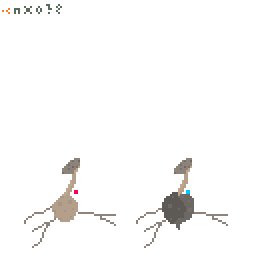
(In red is without the shell and blue is with. The top stem isn't there all year round)
NAME—- treuf
DIRECT NAME—- big bone shell death plant
—●—●—
ANCESTOR—- death eater plant
CHANGES—-
From small purple mushroom-like decomposers to large armored and tuber-like.
The treufs had adapted to spread quickly and efficiently. They would start as a simple spore and quickly begin to form a small bulb. The bulb would begin to grow roots reaching out and as it does so it will also begin to form a shell. Once the roots connect to other nearby treuf they will share nutrients and resources. And when finally the conditions are right the many connected bulbs will grow a fruiting body above their main body. They will begin to produce spores all at the same time communicating with the treufs via roots. This interconnected network ensures that all treufs reproduce at the same time ensuring that many spores will come in contact to form whole new treufs. And while a single treuf spore is capable of producing a whole new treuf on its own it will be a clone of the original instead of a mix of 2 or more parents.
SIZE—-
Depending on species they will be from 4ft wide and 4ft tall to a few inches at most in other species.
—●—●—
LOCATION—- they spread all over the ocean their shell helping protect against many of the deadlier ocean environments
HABITS/BEHAVIOR—- plant
DIET—- decomposing matter and nutrients in the soil.
—●—●—
EXTRA INFO—- many animals often eat the treufs whenever they can. Typically smaller animals capable of crawling into the treufa center via any cracks.
OTHER—- treufs tend to have an almost chalky texture. However they are rich in nutrition. I suggest mashing up a treuf or cutting it into slices to add to a meal. You may also mash a treuf and turn it into a sauce to spread over your food.(the treuf isn't very flavorful so I suggest adding some other spices with it.)
#speculative ecology#speculative fiction#alien species#batheypel#alien design#speculative biology#alien planet#specbio#speculative evolution#xenobiology
7 notes
·
View notes
Note
Yippie!
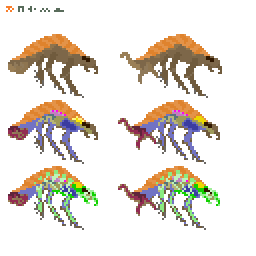




What ya think of these goobers!
I enjoy these goobers :)
103 notes
·
View notes
Text


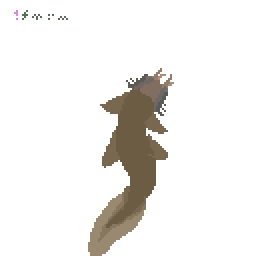
(First image the one with smallest limbs are the young/The second image with the longest jaws is female- 4 earth months/ and the final one the male is the one with the largest tail- 3 local years or around 34 earth months to usually up to 6 local years or 68 earth months)
NAME—-polotos
DIRECT NAME—- queen tryant of many
—●—●—
ANCESTOR—- lisris
CHANGES—-
Much has changed from their ancestors the lisris. And just like their ancestors they are hermaphrodites. Unlike their ancestors however they develope different services cells at different ages.
They start off as genderless then they reach maturity and become develop into females and eventually after a female gets older and bigger they become male.
It was that initial adaption that drove the lisris to evolve into the polotos. Their fin once made of stiff interwoven quill like hairs had changed. Near the end of their body it had fused together creating a flat swimming tail. The hairs in the center became muscle like fusing together to first form steering surfaces and later becoming more robust now used for digging. And the hairs in the front became four sensory organs similar to bug antenna on earth. Their jaws had also changed to match a now primarily ambush lifestyle. They lost their third feeding limb, the 2 side limbs becoming larger and hooked allowing them to grab onto prey and keep them in their jaws.
While these changes would always be present in all stages in the polotos life cycle they would be expressed in very different ways.
The children and young of the polotos had adapted to be proficient scavengers. Eating any dead and decaying body they came upon or if unlucky enough anything small enough would be swarmed and eaten. Their jaws not yet ready to be used for hunting would instead be used to grip onto tiny scraps of flesh and act as scissors cutting off small chunks of meat quickly breaking down anything they can get to. Their tail is large and flat allowing them to swim even at their small size. And their fins, while similar to females, are not used to dig burrows but to drag the worm like young through the ground(and to help steer while swimming). And their 4 sensory hairs are larger relative to their body allowing them to find food much easier.
And finally when they reach maturity they change into females. At this stage they switch from being scavengers to ambush hunters. A group of them gathering using their stronger fins to dig a burrow. And while building these new burrows they line the walls with a fat based mucus. The mucus comes from their new womb. Whenever they aren't pregnant their body still produces the material for the eggs. However whenever there is no need to produce eggs it's expelled as a mucus. Originally this was used to expel the extra material so as to not cause a build up. But over time the mucus has adapted to be used in burrows and with hunting. As they dig a burrow they will use the mucus to add support lining the walls of the burrow. And when hunting after they catch prey they will encase in the mucus and bury it nearby so they may eat it over time. And when they finally finish their burrow they will hide in it leaving only their sensory hairs out. Their jaws will be hidden in their burrow tucked to their side. And unlike when their young the females jaws are actually ready to be used. Their mandibles had gotten stronger and bigger allowing them to properly catch prey.
Usually once they get old enough to become males they would have had 2 clutches. And everything they have one they would leave their old nest as to not compete with their kids. And when they leave a burrow for the final time it often means they are ready to become male. Whenever they become male they get much bigger more muscles appear their many fins ether fuse or are absorbed into just four; Their small tail gets much much bigger and stronger. The jaws somewhat fuse to the side of their head reducing the range they can move but the end segments can still clamp down on prey. The sensory hairs become thicker and turn to four fleshy tendrils and while still capable of their previous purpose they aren't as good at their job. However that doesn't matter as much as they have switched from a stationary ambush predator to an active hunter. They'll swim around using their tendrils to feel or smell our prey. And once they finally get to their prey they'll latch on grabbing with their tendrils their mandibles swing shut clamping onto the prey (usually multiple times). And if they aren't currently in control of a group of females they will eat the entire meal. Now whenever it's mating season (late winter) a male will find a group of females and claim them. The male after mating will begin to hunt for not only himself but his mates. They'll kill prey and eat little to none before encasing it in mucus and carrying it to the nesting ground. And once the females have laid their eggs and left the male will stand guard over the nest till the eggs hatch. After they hatch (about 2 days) the male will hunt once more before dropping the meal in the nest for the young.
After he will swim off on his own.
SIZE—- young are only 0.2 inches
Females are up to 5 inches
And males can be from 9 inches to 2 feet long
—●—●—
LOCATION—- they live anywhere there is soft ground and very rarely will they try to inhabit rocky areas such as tide pools.
HABITS/BEHAVIOR—- they are fairly aggressive as they no longer have eyes and if you don't seem like one of them you will be eaten or they'll attempt to eat you. This is actually why many of the young die as when they first hatch they aren't fully oriented with the world and may eat one another, this causes 10% of total polotos fatalitys especially in the young. Other than that they are very pattern orientated often doing the same or similar things if it gives a good result. This includes males choosing hunting locations if food is their females will bury food in the same spot if it reduces theft from others and they'll even eat at the same times throughout the day.
(And whenever armored prey is brought to the females they will often glue the inedible armor onto the male. This adds protection onto a male however sometimes it can be too much and slow down the male)
DIET—-carnivore
—●—●—
EXTRA INFO—- if a male finds something they can not kill with their jaws they will encase it in mucus in hope to suffocate it.
OTHER—- they are somewhat tough being made of mostly strong muscle. They taste great with salt and hot sauce or peppers.
#speculative ecology#speculative fiction#alien species#batheypel#alien design#speculative biology#alien planet#speculative evolution#specbio#xenobiology
11 notes
·
View notes
Text





(Image 1 is of normal seradum. Blue red mark shows their tongue. Image 2 shows organs of base seradum marked red is a male marked blue is female this one does have an egg sack but normally they are only one gender. Image 3 matriarch seradum-all are females- image 4 organs for matriarch image 5 baby seradum
NAME—-Seradum
DIRECT NAME—-sneaky shell of heavy
—●—●—
ANCESTOR—- freafs
CHANGES—-
they had changed a lot from their Ancestors. After the shaded meteor impact much of the world had died. This caused a famine and while many species started to fend for themselves some began to work better on working as a whole.
The freafs already moved together and helped eachother to some degree however once they began to have less food they began to work together more. Eventually this lead to the arise to a metamorphic lifestyle and two different cast.
These three different cast arose for 2 reasons.
1- they need to be moving constantly to get food.
2- they need to keep their eggs safe.
What better way to solve this issue other than to have a mobile armored hatchery? These are called matriarchs. The matriarchs are much larger than the rest of their herd. And are very often the leaders.
The matriarch has developed a horn ontop of their front segment. This is so when a matriarch encounters another herd the 2 matriarchs will try flip the other onto their back. Once the winner is decided they will inspect the enemy herds members. The matriarchs do so with their tongue.the tongues of matriarchs has changed to be a lot larger and more specialized. Their tongues have developed chemical sensors and pressure sensors. This helps the matriarch determine if a enemy herd has a strong member. If a herd does have a stronger member the winner will be taken into the winning matriarchs herd. And if the winning matriarch needs to she will leave a weaker member behind with the looser. This helps ensure that only the strong survival and helps to encourage competition.
And not only is the matriarch in charge of ensuring the strength of her herd but she is also responsible for a large part of Reproduction in the herd. While the females are capable of carrying their own eggs they much more often transfer them to the matriarch. This is done via the female spitting out her eggs and holding them with her tongue where she will hand these off to the matriarch. The matriarch will then take these eggs and will put them into her own much much larger egg sack where the eggs will attach to the inner layer of her egg sack and continue developing from there.
The next cast is more or less just average. They aren't specialized to fight or anything. They can be ether male or female. And they only have one goal.
-Follow the matriarch.
Now all that doesn't mean they haven't changed. They are much more flat compared to their Ancestors making them much more stable. And their tongue had also changed to more muscular allowing for an easier time getting food.
And now probably the most dramatic change would be the young. Their tail had flattened out and formed segments allowing for it to be used as a paddle allowing them to swim. And to accommodate the tail 2 segments underwent big changes. The second and first segment(not including the head) had changed to give greater control while swimming. The first segment at first developed large flat plates so when they leaned they could better control turning. However as those fins first began to develop a need appeared for faster more accurate turning and that pushed for the ability to tilt these fins. This happened at first at the very bend of the armor it had softened but what point was it if they couldn't control it? And so some simple muscle attachments formed finally allowing them to tilt their new fins.
However that wasn't all. On their second segment they had formed simpler fins designed just to make them a bit more flat. This meant their would be more water under them and means they could spend less energy gliding through the water. And eventually when they reach a mature age they shed their first set of fins and the second will follow soon. At this stage they will become 1 of 2 genders.
SIZE—- a matriarch is typically twice as large as any other member. The smallest species is only a third of an inch while the largest almost reach a foot at 10 inches.
—●—●—
LOCATION—- with a wide range of species you cam find them almost anywhere in the ocean. From the shallow tides to the deep trenches and even the arctic.
HABITS/BEHAVIOR—- they are a very tight nit group. They travel along in herds wandering the ocean floor always looking for more food. They enjoy to have rocks nearby so in case of a predator they can face their gut to the rock for protection. However the young are very different. They use their ability to swim to its best swimming upside down near the oceans surface they look for any plants avaliable. And once they are old enough a seradum will form their own group. Eventually a matriarch will be selected and become the leader.
DIET—- herbivore- often they eat short flowers but they will also eat any other avaliable plants.
—●—●—
EXTRA INFO—- they are rather skittish when a sudden change happens in their environment. so if you keep them as pets don't switch up their cage! Okay? It really startles them.
OTHER—- they have a very earthy taste and taste similar to crab. I suggest boiling them as their shell will fall off on its own once it's heated.
#speculative ecology#speculative fiction#alien species#batheypel#alien design#speculative biology#alien planet#specbio#speculative evolution#xenobiology
17 notes
·
View notes
Text
As we move to the next era I belive changing the lineage symbols to what the species comes from will make it much easier to follow. I will keep the base color so you can still tell which one is lineage 1,2,or 3

#speculative ecology#speculative fiction#alien species#batheypel#alien design#speculative biology#alien planet#specbio#speculative evolution#xenobiology
2 notes
·
View notes
Text
Will be redoing some post as I'm getting more structure for the project such as the updated language sheet.
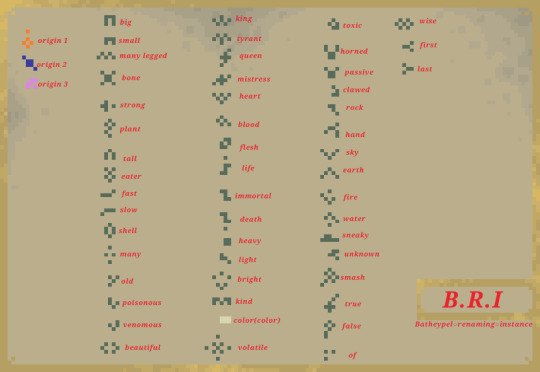
4 notes
·
View notes
Text

NAME—-lisris
DIRECT NAME—- fast eater of flesh
—●—●—
ANCESTOR—- eater of shell
CHANGES—- lots has changes for the lisris. From small ground crawlers to free swimming hunters.
They had developed a mane of hair like structures tightly grown together acting similarly to a fin. They had flattened out and a simple eye covered with a glossy almost glass like shell. Their reproductive organs have moved inside the back of their gut allowing them to reproduce with an oral kissed.
SIZE—- 1 inche for the smallest species and up to 2.5 inches for the largest.
—●—●—
LOCATION—- shallow or deeper calm waters.
HABITS/BEHAVIOR—- small groups called a “field” will swim around looking for any soft bodied prey to grab onto. Whenever one grabs onto a piece of prey they will all latch on taking turns taking bites.
They are scared of anything bigger than they are even if it's the same species.
DIET—- carnivore- soft bodied prey mostly but will hunt bigger stronger prey when the chance arises.
—●—●—
EXTRA INFO—- once an embryo has been fertilized the parent will almost immediately swim to the ocean floor and spit them out. This may seem like a death sentence but it actually helps keep them safe till the embryos develope enough.
At the back of their gut a lisris has a spongy membrane. This membrane covers the eggs/embryos of the lisris. Each one starts out as round relatively large orb. The outer layer is made of a thin cellular membrane while inside holds the Genetic nucleus of the cell. Whenever the lisris does an oral kiss they push the embryos through the spongy membrane where the many embryos will collide with each partners. And once the embryo is released onto the seafloor the outer layer of the embryo will begin to fuse all the cells into one large cell.
OTHER—- although small and generally not a good food source nor a tasty one. They make great appetizers.
(This was supposed to be posted long ago like at least 3 months ago)
#speculative ecology#speculative fiction#alien species#batheypel#alien design#speculative biology#alien planet#specbio#speculative evolution#xenobiology
5 notes
·
View notes
Text
Okay okay... I may have never submitted one of the animals I thought I had. So once that's up we should be good
1 note
·
View note
Text
Welcome back to batheypel I know it's been awhile however I promise we've been working hard. We changed the format for submission so hopefully that not only makes this easier to follow but also more entertaining! So without further ado welcome back!

Approximately 1200 years after the initial impact. Most life has died off leaving but a few pockets of life. The eternal winter is finally dying off. And with it life begins to rebound; However it would take four thousand years just for ecosystem to balance. And during those years all life will nearly go extinct several times. And even when the ecosystem balances it will take many many more years for it to flourish once more.
—---
In the above image is an ecosystem on the verge of collapse.
—---
#speculative ecology#speculative fiction#alien species#batheypel#alien design#speculative biology#alien planet#specbio#speculative evolution#xenobiology
6 notes
·
View notes
Text
Proud to announce we were not just slacking on post
4 notes
·
View notes
Text
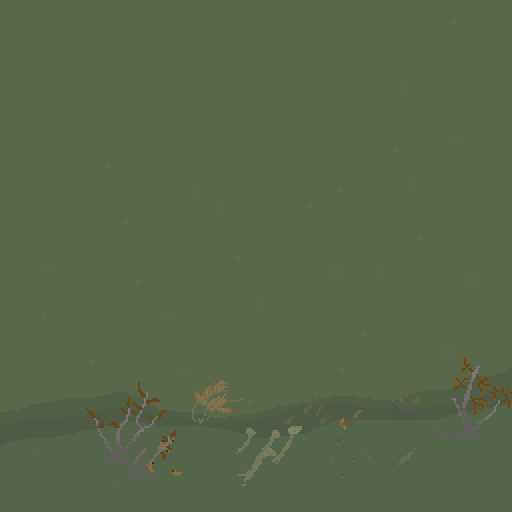
Art for the next era
#speculative ecology#speculative fiction#alien species#batheypel#alien design#speculative biology#alien planet#specbio#speculative evolution#xenobiology
10 notes
·
View notes
Text
Batheypel-memorium
As the world's first ever mass extinction occurs it had caused many changes and even killed most life on Batheypel. This list is composed of all the clades/species that went extinct and their reasons.
Speser- most died due to a mix of starvation and suffocating. This was caused by the excessive amount of sediment and minerals introduced into the water clogging up their breathing pores.
Floaters-extinct due to massive fireball from initial impact burning most and boiling any that survived.
Laungra- died due to initial fireball.
Fern grass- died due to initial fireball.
Grispers- starvation due to main food source nearly dying off.
Fris- died due to starvation. There metabolism was not set for low food environments
Great old eaters- died long ago due to their descendents out competing them.
Great old many- died due to bring out competed by descendents.
Eater of shell- died due to being out competed by descendents
Many old queen- died due to shaded meteorite impact causing increased sediments and minerals to be introduced into the water.
#speculative ecology#speculative fiction#alien species#batheypel#speculative biology#alien planet#speculative evolution#specbio#xenobiology#alien design
6 notes
·
View notes

